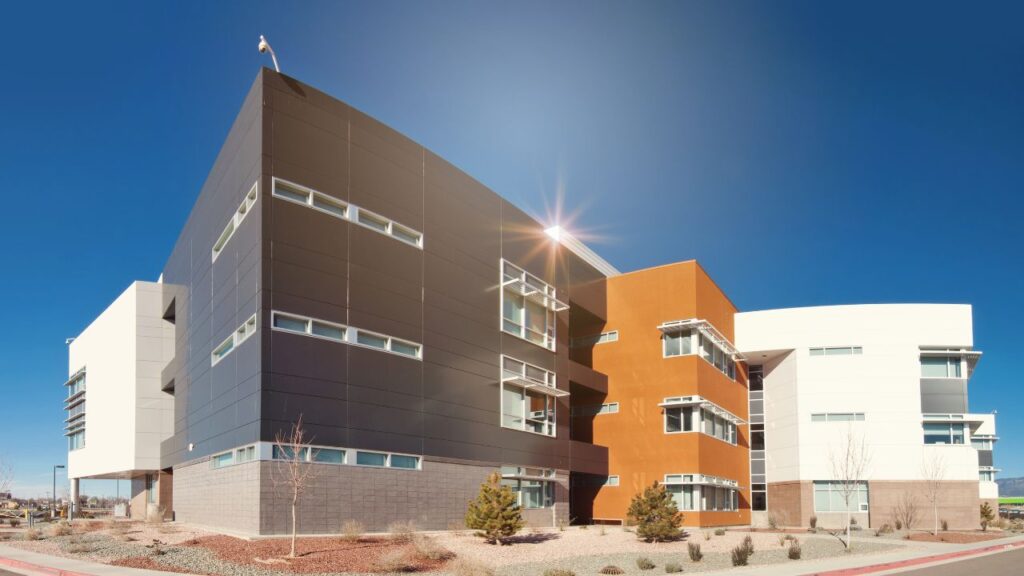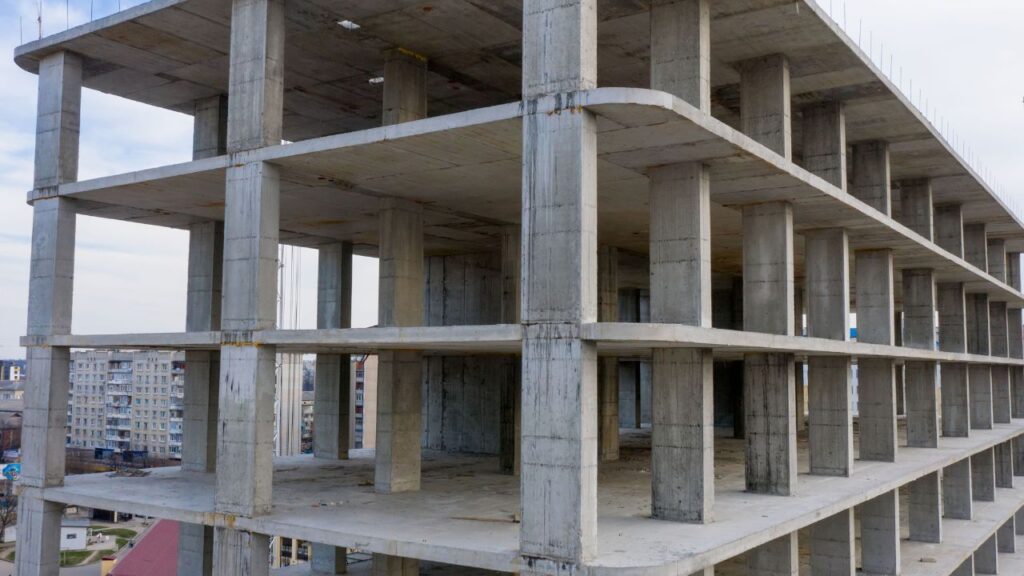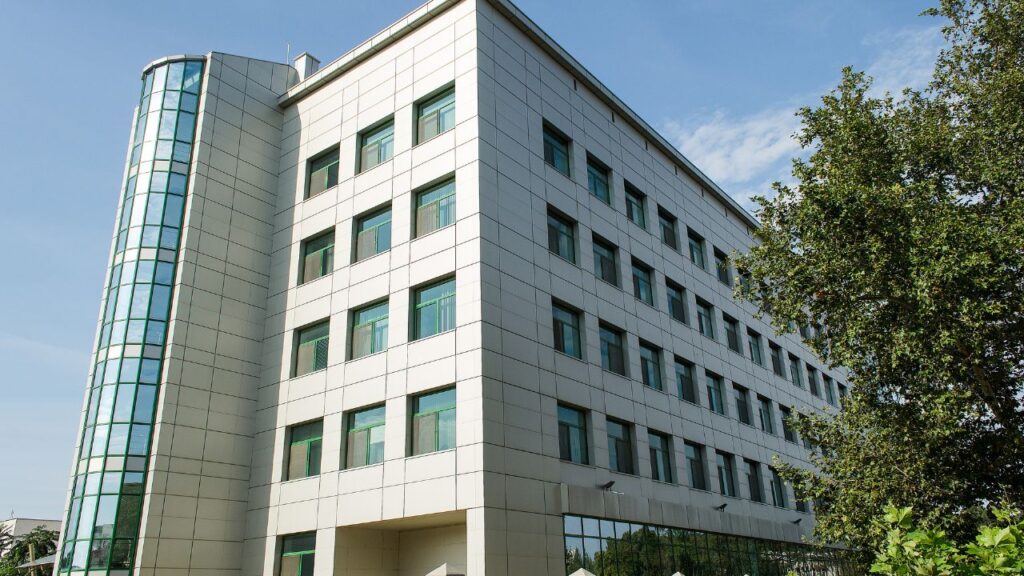Bid Strong, Bid Smart – Try Our Hospital Construction Cost Estimating Service!
- Accurancy
- Efficiency
- Transparency
- Customization
- Time Saving
- Professionalism
- Cost Control

When it comes to constructing hospital buildings, the choice of framing material is a critical decision that significantly impacts the overall cost, durability, and functionality of the structure. Concrete framing has gained popularity in the construction industry due to its strength, resilience, and fire-resistant properties. In this article, we will explore the cost considerations associated with using concrete framing in the construction of hospital buildings.

Concrete stands as a cornerstone in the construction industry, celebrated for its exceptional strength and durability. In the context of hospital buildings, the significance of robust structural integrity cannot be overstated. The demands placed on these structures are immense, ranging from the weight of heavy medical equipment to the constant flow of personnel and patients. Concrete framing provides a resilient framework capable of withstanding these stresses and loads, offering a sense of security and stability that is especially crucial in regions prone to seismic activity. The inherent strength of concrete ensures that hospital structures remain steadfast, promoting safety and reliability in the face of dynamic operational requirements.

Fully Insured License
Hire Contractor For Hospital Construction

Make Informed Design Decisions Showcase Your Design Ideas
Get RenderingHospitals, by their nature, require structures that prioritize safety, particularly in the event of a fire hazard. Concrete emerges as a natural choice due to its inherent fire-resistant properties. In the unpredictable environment of a healthcare facility, where patient well-being is paramount, the ability of concrete structures to withstand and resist the spread of fire is a fundamental advantage. This feature not only enhances the overall safety of patients and healthcare professionals but also contributes to the preservation of critical medical equipment and essential infrastructure, safeguarding the hospital’s ability to function effectively in emergency situations.
Concrete framing is synonymous with longevity, making it an ideal choice for hospital buildings considered long-term investments. The extended lifespan offered by concrete structures ensures that hospitals can serve their communities for decades without significant structural concerns. This durability is especially crucial in the healthcare sector, where continuous operation is imperative. The ability of concrete to withstand the test of time contributes to the stability and reliability of hospital facilities, offering assurance to both healthcare providers and the communities they serve.
In the realm of hospital construction, the financial implications of maintenance cannot be understated. Concrete structures, characterized by their durability and resilience, generally require less maintenance over time compared to alternative materials. This inherent advantage results in lower life-cycle costs, a critical consideration for hospital facilities where disruptions due to maintenance activities can have far-reaching consequences. The reduced need for frequent repairs and upkeep not only contributes to cost savings but also ensures that hospital operations remain seamless, allowing healthcare professionals to focus on their primary mission of providing quality care without unnecessary interruptions.
The primary cost consideration in concrete framing for hospital construction revolves around the material itself. The price of concrete is a dynamic factor influenced by various elements such as local market conditions, the availability of raw materials, and the specific mix design tailored to meet the project’s requirements. Local market fluctuations can significantly impact the cost of concrete, and variations in mix designs, such as the addition of reinforcing materials, may introduce additional expenses.

Rigorous cost analysis and collaboration with suppliers are essential to optimize material costs without compromising the structural integrity and quality of the concrete framing.
Concrete construction demands a skilled workforce, and labor costs represent a substantial portion of the overall budget. Tasks such as formwork installation, concrete pouring, and finishing require experienced and proficient workers. Skilled labor in the realm of concrete construction often commands higher wages due to the specialized nature of the work. These labor costs are a critical factor in the budgeting process and necessitate careful consideration to strike a balance between quality craftsmanship and cost-effectiveness. Efficient project management and workforce optimization strategies can help mitigate labor cost escalations.
The foundation serves as a pivotal element in the construction of hospital buildings, and the choice of concrete framing significantly influences foundation design and associated costs. Properly engineered foundations are imperative to ensure the stability and safety of the entire structure, particularly in hospital settings where structural integrity is paramount. The foundation design process involves careful consideration of soil conditions, load-bearing requirements, and potential environmental factors. While concrete offers robust support, the intricacies of foundation design must align with the unique demands of hospital construction, influencing both the structural soundness and the project budget.
The weight and bulkiness of concrete materials introduce logistical challenges that can contribute to additional costs related to transportation and handling. Specialized equipment and techniques may be required to transport and maneuver large quantities of concrete, particularly in urban areas where space constraints amplify the complexities of transportation. Coordinating the delivery of concrete to the construction site demands meticulous planning to optimize efficiency and minimize associated costs. Strategic logistics management and collaboration with transportation experts are integral components of a cost-effective concrete framing strategy.

While concrete framing offers a durable and long-lasting solution, the construction time associated with this material may extend beyond that of alternative options. The curing process and the need for precision in concrete construction can contribute to a longer construction timeline. Delays in construction can have cascading effects on overall project costs, impacting financing arrangements and labor expenses. Effective project scheduling, streamlined construction processes, and proactive management of potential delays are vital considerations to control construction time and mitigate associated financial implications. Balancing the benefits of concrete with the imperative of timely project completion is central to achieving cost-effective hospital construction.
Implementing cost-saving strategies is crucial in hospital construction projects to ensure financial efficiency without compromising the quality and functionality of the facility. Here are some cost-saving strategies specific to concrete framing in hospital buildings:
One of the most impactful strategies for saving costs in concrete framing for hospital buildings is engaging in value engineering and design optimization. This involves a meticulous evaluation of the construction design, materials, and methodologies to identify areas for cost reduction without compromising structural integrity. Collaborating closely with architects and engineers during the initial stages allows for the development of a design that is not only efficient and functional but also cost-effective.

By scrutinizing every aspect of the design, from the choice of materials to construction methods, stakeholders can make informed decisions that strike a balance between quality and affordability. Value engineering ensures that the final design is optimized for cost savings without compromising the safety and durability required in hospital construction.
Strategic procurement practices play a pivotal role in minimizing costs associated with concrete framing. Negotiating bulk purchasing agreements for concrete and other construction materials can yield significant discounts, especially given the substantial quantities required for hospital construction. Additionally, sourcing materials locally helps mitigate transportation costs. By tapping into local suppliers, not only do construction teams potentially access competitive prices, but they also reduce the environmental impact associated with long-distance transportation. This dual approach of bulk purchasing and local sourcing forms a robust cost-saving strategy, ensuring the efficient and economical acquisition of the essential materials needed for concrete framing.
The efficiency of formwork systems is a critical determinant in the cost-effectiveness of concrete framing. Investing in modern and efficient formwork systems can substantially reduce both labor costs and construction time. Modular and reusable formwork technologies, designed to be easily assembled and disassembled, enhance the speed and precision of the concrete pouring process. This not only accelerates the construction timeline but also minimizes labor-intensive tasks associated with formwork installation. The upfront investment in advanced formwork systems pays off in long-term cost savings, as their reusability and efficiency contribute to a streamlined construction process.
Skilled labor constitutes a significant portion of the expenses in concrete framing for hospital buildings. Investing in training programs for construction workers involved in concrete-related tasks can enhance overall labor productivity. Well-trained workers are not only more efficient but also less prone to errors, ensuring that tasks related to formwork installation, concrete pouring, and finishing are executed with precision and speed. While upfront training costs may be incurred, the long-term savings in labor expenses, coupled with improved construction quality, make this strategy a wise investment in achieving cost-effectiveness in concrete framing.
Prefabrication and modular construction techniques offer a forward-thinking approach to concrete framing, particularly in the context of hospital buildings. By producing certain components off-site, construction teams can significantly reduce on-site labor requirements and construction time. Prefabricated concrete elements, engineered to fit seamlessly into the overall structure, not only accelerate the construction process but also enhance precision and consistency. While the initial investment in prefabrication technology may be higher, the long-term cost savings in labor, reduced on-site errors, and expedited construction timelines make this strategy a financially sound approach for concrete framing in hospital construction.
Incorporating energy-efficient construction practices into concrete framing processes aligns with sustainability goals while also contributing to cost savings. Optimizing the curing process of concrete and implementing technologies that reduce energy consumption not only minimize the environmental impact but also lower operational expenses. While the primary focus is on promoting sustainable construction, the secondary benefit of reduced energy costs during construction adds to the overall cost-effectiveness of the concrete framing process. By embracing energy-efficient practices, construction teams can achieve a harmonious balance between environmental responsibility and financial prudence.
The cost of concrete construction in the United States was approximately $100 to $150 per square foot for a typical commercial building. Hospital construction often involves specialized requirements, which may push costs toward the higher end of this range.
Considering this, a general estimated cost range for the concrete framing of a hospital building could be:
Keep in mind that these figures are general estimates and actual cost can be different by your location, project size and complexity.
Choosing concrete framing for hospital buildings brings forth a multitude of benefits, encompassing structural integrity, fire resistance, longevity, and reduced maintenance costs. While the initial investment is significant, the enduring advantages align well with the demands of healthcare infrastructure. However, meticulous consideration of cost factors such as material, labor, foundation, transportation, and construction time is vital. Implementing cost-saving strategies like value engineering, bulk material purchasing, efficient formwork systems, labor productivity enhancements, prefabrication, and energy-efficient practices ensures financial efficiency without compromising the quality of construction. As a reference, the estimated cost range for concrete framing in hospital buildings falls between $120 and $150 per square foot, varying based on location, project size, and complexity. This underscores the importance of tailored project assessments for precise cost estimations.
Concrete framing is favored in hospital construction due to its exceptional strength, durability, and fire-resistant properties. It provides a robust framework capable of withstanding the immense stresses and loads associated with healthcare facilities.
Concrete framing offers an extended lifespan, making it an ideal choice for long-term investments in hospital infrastructure. Its durability ensures that hospitals can serve their communities for decades with minimal structural concerns, crucial for continuous operation in the healthcare sector.
Key cost factors include material costs, influenced by local market conditions and specific mix designs; labor costs, given the skilled workforce required for tasks like formwork installation and concrete pouring; foundation requirements, impacting stability and safety; transportation and handling, considering the weight and bulkiness of concrete materials; and construction time, which may be longer compared to alternative materials.
Effective cost-saving strategies include engaging in value engineering and design optimization, negotiating bulk purchasing agreements for materials, investing in efficient formwork systems, enhancing labor productivity through training, incorporating prefabrication and modular construction techniques, and embracing energy-efficient construction practices.
The estimated cost range is approximately $120 or more per square foot at the low end, $135 or more per square foot in the mid-range, and $150 or more per square foot at the high end. Actual costs can vary based on location, project size, and complexity.
Careful consideration of cost factors is vital to ensure financial viability while maintaining the quality and functionality of hospital buildings. This includes optimizing material costs, managing labor expenses, addressing foundation requirements, planning for efficient transportation, minimizing construction time, and implementing cost-saving strategies tailored to the unique demands of healthcare infrastructure.
Here I am going to share some steps to get your concrete framing cost for hospital buildings estimate report.
You can send us your plan on info@estimatorflorida.com
Before starting your project, we send you a quote for your service. That quote will have detailed information about your project. Here you will get information about the size, difficulty, complexity and bid date when determining pricing.
Our team will takeoff and estimate your project. When we deliver you’ll receive a PDF and an Excel file of your estimate. We can also offer construction lead generation services for the jobs you’d like to pursue further.



561-530-2845
info@estimatorflorida.com
Address
5245 Wiles Rd Apt 3-102 St. Pete Beach, FL 33073 United States
561-530-2845
info@estimatorflorida.com
Address
5245 Wiles Rd Apt 3-102 St. Pete Beach, FL 33073 United States
All copyright © Reserved | Designed By V Marketing Media | Disclaimer